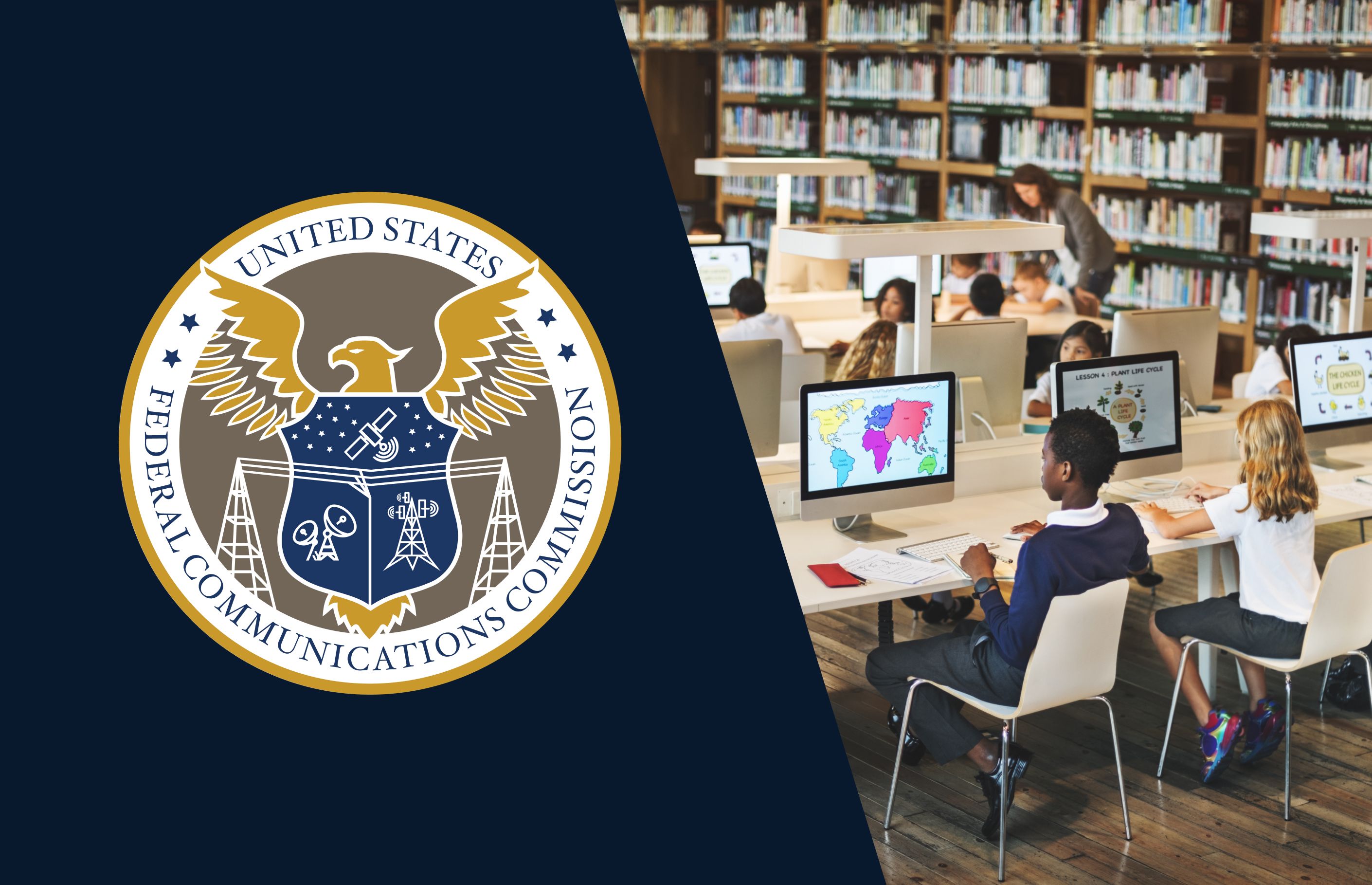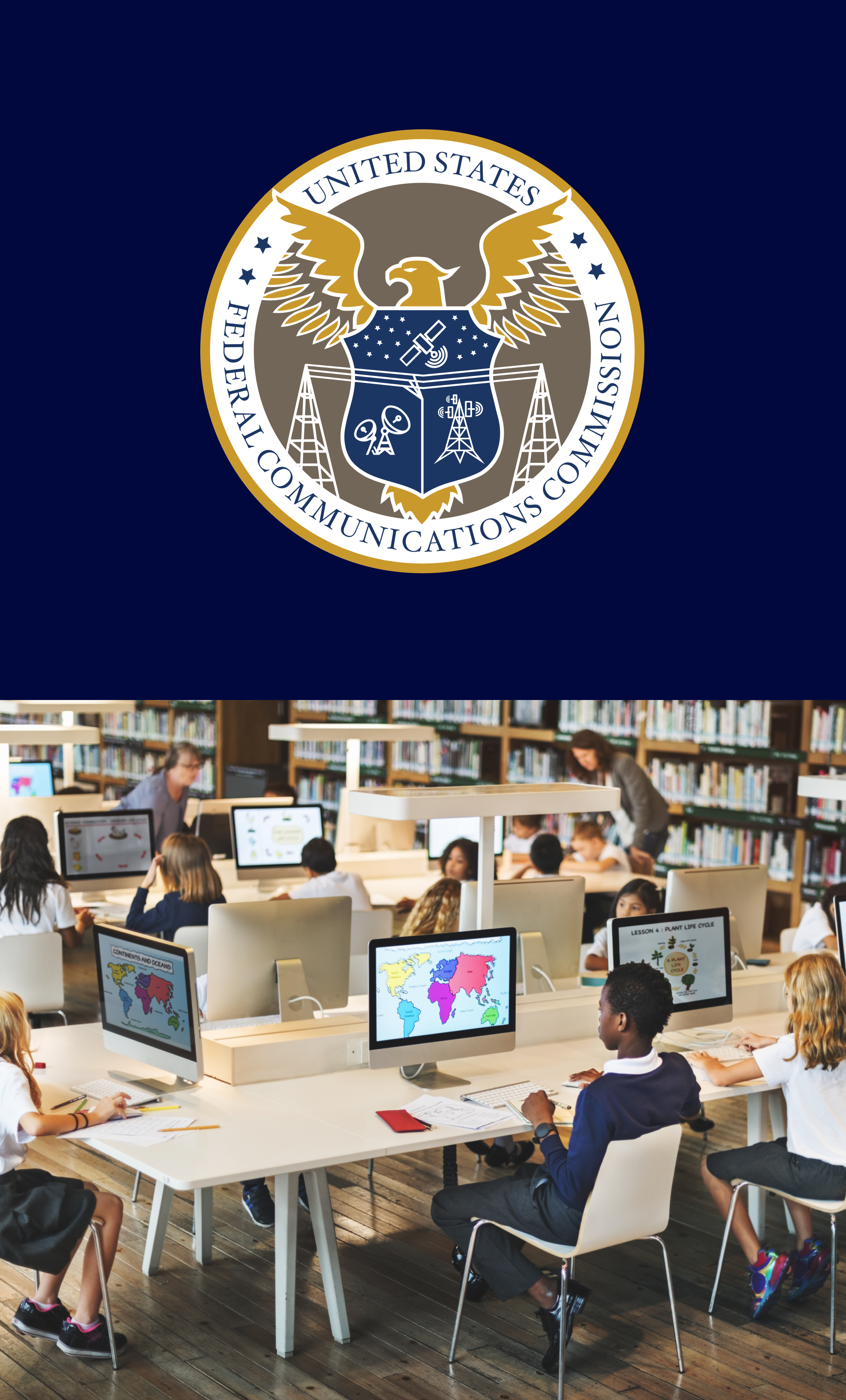More blog posts
View all blog postsFederal Funding
Schools and libraries can leverage e-rate federal funding for wireless broadband access
Updated on May 8, 2025

Most children today are more likely to see their first words on a screen than in a book. Digital technology and broadband access have become essential aspects of education, both in schools and at libraries. These institutions often have difficulties accessing high-quality broadband access.
While this is especially true for rural and remote institutions, it remains the case across the country, from the towns to the suburbs to the cities.
But there is help available. The Federal Communications Commission (FCC) oversees the E-Rate program, a nearly $5 billion fund made available annually to primary and secondary schools and school districts, as well as public libraries (though not college libraries) to help them access high-quality broadband. Here is a quick overview of how the program works and how your institution can take advantage.
Primary education, secondary education, and public libraries qualify
First and foremost, it’s important to confirm if your institution even qualifies for funding.
The FCC restricts funding to non-profit primary and secondary schools that provide primary or secondary education as per state law, and that do not offer terms beyond grade 12. Other schools that qualify include those on tribal lands, as well as those that offer education for students with disabilities or medical needs, juvenile justice schools, and those where more than 35% of the students qualify for the National School Lunch Program (NSLP). For-profit schools and those with $50 million endowments or greater do not qualify.
Similarly, qualifying libraries include public libraries, as well as those in primary and secondary schools, on tribal lands, and academic and research libraries not associated with a post-secondary institution. Private libraries can qualify at the discretion of their state.
Transmission services and broadband connections eligible
An important thing to note is that the eligible services offered by the Universal Service Administrative Company, which administers the program, are updated every year to clarify exactly what equipment and services are eligible. It’s important to get this right in applications because if more than 30% of the equipment or services in an application are ineligible, the entire application will be rejected.
Equipment and services are broken down into categories. Category One includes services needed to support broadband access, and Category Two covers the internal connections needed for broadband connectivity.
In either case, the eligibility of a given cost in each category is predicated on whether it is a direct or an indirect cost. If a cost is incurred that is directly associated with broadband access, it is likely covered. But costs incurred to indirectly facilitate broadband access generally are not.
Installation, operation, maintenance qualify for coverage
A full list of eligible services in each category is available here. Worth noting is which costs within each paradigm quality for federal funding.
In Category One, costs required to either get services up and running or keep them running are generally covered, including construction, installation, and activation charges, as well as monthly charges, maintenance, and operation costs. However, staff salaries and labor costs for personnel, as well as any consulting services used during the process, are not eligible.
Category Two, which mainly includes the hardware necessary to deliver broadband access and the software in that hardware, is in some ways more open-ended. Cloud-based virtualizations of functions provided by hardware and software are eligible for funding, as are equipment that combines eligible functions (i.e., combined routers and switches), as well as caching services, equipment, and servers. Applicants should also note that while they can simply request funding for hardware and receive funding for any software associated with it, bug fixes, patches, and security updates are considered basic maintenance, and funding does need to be specifically requested for that separately.
Broadband funding includes third-party support and maintenance
While Category One funding eligibility does not include third-party consultation beyond support for the initial installation and configuration, Category Two funding is more lenient in this area.
Services to install, monitor, and manage internal broadband connections are eligible for funding under the program, so long as they “directly support and are necessary for the broadband connectivity,” according to the 2024 Eligible Services list. Schools and libraries are also eligible for funding if they simply lease the equipment as part of a managed services contract, not only if they own it.
Basic maintenance and technical support are also eligible for funding under the program. This includes repair and upkeep of hardware, maintenance of cables, wires, any necessary configuration changes, as well as basic tech support and any software patches, bug fixes, or security updates.
Funding model and funding floor predicated on location
Also important to note is that the program’s funding model has changed over the years, including the funding cycles, as well as the funding rate by pupil for schools.
Funding guidelines include the following important notes:
- School funding is on fixed five-year cycles, at a pre-discounted price of $167 per student
- Library funding is on the same five-year cycle, and is set at $4.50 per square foot of the library, or all the libraries in a library system
- Eligible schools and libraries have a funding floor of $25,000 per school or library, while tribal libraries have a floor of $55,000
Schools and libraries should also note that the funding is intended to supplement spending, not replace it. The program makes funding available on a percentage basis, ranging from 20% to 90% of the cost of the equipment or service, based on whether the facility is in an urban area, a rural area, and the percentage of students that qualify for the NSLP. The full chart and breakdown can be found here.
Inseego brings high-quality connectivity anywhere
While this program offers funding to help finance the process of bringing wireless broadband into schools and libraries, it’s important to find the right partner to help your institution get the best-quality connection as easily as possible.
Inseego’s solutions include the necessary hardware, software, and service to effectively deploy devices and networks anywhere they’re needed. With industry-leading 5G experience, our experts are fully qualified to deploy our full range of 5G-capable and 4G/LTE supporting devices, including indoor routers, outdoor CPEs, industrial gateways, and mobile hotspots. The Inseego Mobile app allows technicians to easily find the optimal placement for devices, while the Inseego Connect app enables multi-device management from a single-pane-of-glass view, making it easy for school district administrators to manage device updates and settings.
Explore Inseego's 5G fixed wireless access portfolioMiFi X PRO hotspot: Portable and business-grade
The MiFi X PRO hotspot from Inseego is a powerful yet portable solution that delivers business-grade reliability and performance. Designed for educational settings, it combines high-speed 5G connectivity with a compact form, making it ideal for supporting remote learning and extending coverage to areas lacking infrastructure. Despite its portability, the MiFi X PRO ensures robust internet access, enhancing the learning experience for students and educators alike.
Managing multiple MiFi X PRO devices is seamless with Inseego Connect cloud management software. This platform provides a centralized view, enabling administrators to efficiently manage device settings, updates, and performance, ensuring a smooth and secure network experience across the institution.
Contact us to learn more about how our solutions can help your school or library deploy a powerful, cost-efficient wireless broadband solution.
Talk to our experts!
Set your customers or business up with the fastest, most secure, easiest, most reliable fixed wireless solutions.
Do you require funding for a connectivity project?
Here are some resources if you're interested in learning more about funds or government compliance:
What type of organization are you trying to get funding for?
What type of environment do you need connectivity for?
How familiar are you with existing funding programs or grants for connectivity enhancement?
Do you want insights from Inseego's experts on funding opportunities that apply to your project?
Here are some resources if you're interested in learning more about funds or government compliance:
What are your details?
How can we contact you?







